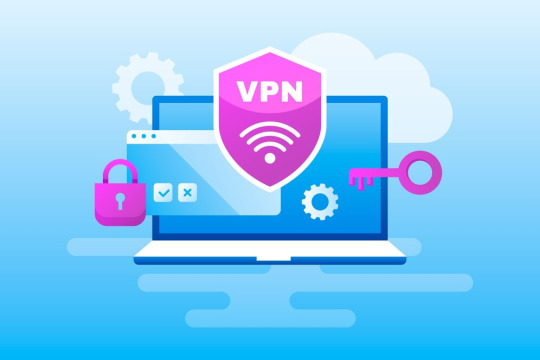#layer 2
Text



Kels and their dad :)
Bayek isn't dark enough my refs were so off
Bases by @mellon-soup vvvvvv



#i rarely use bases#but these were so cute#bases were cropped (badly) on pinterest smh#the newby art#oc#the layers#layer 2#layer sass#art#digital art#assassin's creed oc#assassin's creed#bayek of siwa#edward kenway#friend's oc#doodle#drawing#original character#video game#ac 1#ac black flag#ac origins
15 notes
·
View notes
Text
youtube
Part 2 is out
A few minutes shorter than I thought, but I had to cut out some of the rambling. And yeah, in the future I'll go all the way with a script and less emberassing voice performance.
#soul eater#soul eater iceberg#skywhale#monotone princess#medusa's plot#battle resoance#fire force#video games#soul eater not#layer 2#iceberg#explained#more to come soon...#Youtube
14 notes
·
View notes
Note
Hello Kels does this bird look familiar to you? I overheard some fellas mentioning some 'Vulture of Masyaf', maybe you know about it?

(Teehee hello there mandatory Nasim reference)

"Oh yeah that's a bearded Vulture they're my favorite bird!...As for the Vulture of Massyaf that's my....my..."

"Please don't ask about him again"
#you know who Nasim is#but for others#he's the first father figure Kels finds during their travels#oc#ask the layers#art#the layers#layer 2#layer sass#kels miles#the newby art#ac oc#alexios of sparta#basim ibn ishaq#their sons
9 notes
·
View notes
Text
whenever people are like "bloober team aren't that bad, they understand horror" i think of this clip of jerma playing 'layers of fear'
22K notes
·
View notes
Text
zk-Rollups - How They are Changing Layer 2 Solutions

Key Takeaways
What are zk-Rollups?
zk-Rollups help blockchain handle more transactions by bundling them together off-chain and proving their validity with a special math trick called zero-knowledge proofs. This reduces costs and speeds up transactions.
Advantages and Challenges
Advantages: They make blockchain faster and cheaper by doing more work off the main chain.
Challenges: They're complex to set up and need good data handling to work well.
Comparison with Other Solutions
zk-Rollups are different from state channels and sidechains because they focus on proving many transactions at once, rather than keeping a channel open or running a separate chain.
Nadcab Labs' Role
Nadcab Labs helps improve zk-Rollups by researching, developing tools, and making them safer for everyone to use.
Future Impact
zk-Rollups could change how we use blockchain by making it faster and cheaper. This could lead to more apps and services using blockchain technology.
Lead-In
zk-Rollups are a key invention that could revolutionize Layer 2 scaling in the growing ecosystem of blockchain scalability solutions. By fusing the strength of roll-up technology with the efficiency of zero-knowledge proofs, zk-Rollups presents a viable solution to the current scalability trilemma that blockchain networks face, balancing throughput, security, and decentralization. This game-changing technology is essential to the development of future decentralized applications (dApps) since it not only lowers costs and increases transaction throughput while preserving the trustless nature of blockchain networks. An important turning point in the continuous development of blockchain technology is reached as we learn more about the nuances of zk-Rollups and how they affect the scalability of the blockchain.
What Exactly Are zk-Rollups and How Do They Work?
The zk-Rollups technique is a revolutionary way to execute more transactions on blockchain networks like Ethereum. Instead of processing each transaction individually on the blockchain, zk-Rollups combine multiple transactions off-chain and generate a cryptographic confirmation of their authenticity. Subsequently, this proof is posted on the blockchain, reducing the amount of data and processing power required on the main chain.
How Do They Work?
Transaction Aggregation: Multiple transactions are gathered and processed off-chain.
Proof Generation: A zero-knowledge proof (a type of cryptographic proof) is created to verify that these transactions are correct.
On-Chain Verification: This proof is submitted to the main blockchain (like Ethereum) and verified, ensuring the transactions are valid without processing them all on-chain.
What Are the Downsides and Challenges of Using zk-Rollups?
Technical Complexities
Complex Implementation: Requires advanced cryptographic knowledge.
Resource-Intensive: High computational costs for generating zero-knowledge proofs.
Data Availability Issues
Dependency on Off-Chain Data: Verification issues if off-chain data is unavailable.
Ongoing Solutions: Data availability proofs and committees still in development.
Maturity
Lack of Robustness: Still a relatively new and evolving technology.
Adoption Challenges: Slower adoption compared to more established Layer 2 solutions.
Interoperability
Compatibility Issues: Challenges in achieving seamless interaction with other Layer 2 solutions.
Standardization Needs: Efforts required to standardize protocols and interfaces.
User Trust
Building Confidence: Requires extensive testing, auditing, and transparency.
Steps for Trust: Regular audits, real-world testing, and open communication with the community.
How do zk-rollups help blockchain technology and make transactions faster by being a layer 2 solution?
As a layer 2 solution, zk-rollups improve blockchain technology's scalability by batching several transactions into one smaller transaction that is subsequently validated on the Ethereum mainnet. By drastically lowering transaction costs and expediting processing times, this method improves the effectiveness and economics of blockchain applications.
Transaction Offloading: Transactions are conducted off-chain and only summary data or proofs are posted back to the main chain.
Increased Throughput: By handling transactions off-chain, Layer 2 solutions significantly increase the transactions per second (TPS) capacity.
Cost Reduction: Off-chain transactions usually have lower fees compared to on-chain transactions.
Enhanced User Experience: Faster transaction times and lower fees improve the user experience.
Here are some examples of layer 2 solutions used to improve blockchain scalability?
Payment Channels:
These include off-chain user transactions that ease congestion on the main blockchain, as those made possible by the Raiden Network for Ethereum and the Lightning Network for Bitcoin.
Sidechains:
Sidechains are independent blockchains that run parallel to the main chain and are connected via a two-way peg. They allow assets to be transferred between the main chain and the sidechain, enabling offloading of transactions. Example - Plasma.
Rollups:
Rollups batch multiple transactions into a single transaction processed off-chain. The batched data is then submitted to the main chain, reducing data and computational load. Types of rollups include:zk-Rollups (Zero-Knowledge Rollups) & Optimistic Rollups.
State Channels:
such as those found in systems like Perun and Celer Network, which let several parties carry out transactions off-chain and only resolve the ultimate state on the main blockchain.
What Are the Challenges and Limitations of Layer 2 Solutions?
Complexity : Developing and maintaining Layer 2 solutions can be technically challenging.
Security : Ensuring the security of off-chain transactions and their connection to the main chain is crucial.
Interoperability : Achieving seamless interaction between different Layer 2 solutions and with the main chain can be difficult.
User Adoption : Educating users and developers about the benefits and usage of Layer 2 solutions is essential for widespread adoption.
How do zk-Rollups improve the efficiency of decentralized applications in blockchain ecosystems?
Blockchain's Layer 2 solutions are enhanced by zk-Rollups, which significantly increase scalability and lower transaction costs. They accomplish this by compiling off-chain transactions into a succinct proof (zk-Rollups), which is subsequently added to the main chain. This method increases the effectiveness and affordability of decentralized applications while preserving security through cryptographic proofs. zk-Rollups are also compatible with many blockchains, which increases their usefulness for a range of applications, including decentralized exchanges and gaming sites. All things considered, they successfully tackle the two main issues with blockchain technology: cost and scalability.
How does Nadcab Labs Contribute to the Advancement of zk-Rollups and Layer 2 Solutions?
One prominent player in blockchain technology, Nadcab Labs, has been actively working on developing and improving Layer 2 solutions, such as zk-Rollups. Their efforts are concentrated on maximizing security and scalability to guarantee safe and effective blockchain operations. Contributions from Nadcab Labs include:
Research & Development: Developing zk-Rollups technology to reduce costs and latency while improving transaction speed.
Implementation Support : Offering strong frameworks and instruments to incorporate zk-Rollups into different blockchain applications..
Security Enhancements : Improving the zk-Rollups' cryptographic methods to guarantee user confidence and data integrity.
Final Thoughts
zk-Rollups, blockchain scalability has advanced significantly and there's finally a workable answer to high fees and sluggish transaction speeds. Scalability, privacy, and security combined with zk-Rollups' potential to revolutionize Layer 2 solutions will allow the next generation of decentralized applications to flourish and create a more inclusive and productive decentralized future.
Author Profile:
Nadcab Labs - A Leading Blockchain Developers With over 8+ years of experience in Custom Blockchain Development, Smart Contract Development, Crypto Exchange Development, Token Creation and Many More Services.
0 notes
Text
#blockchain#blockchain development#software#crypto#blockchain services#layer 1 blockchain#layer 2#layer 3 blockchain#custom blockchain development company
0 notes
Text
Why Should Investors Pay Attention to Layer 2 Cryptocurrency Development in 2024?

In the world of cryptocurrencies, Layer 2 solutions are emerging as a key innovation with the potential to revolutionize the way transactions are processed on blockchain networks. Layer 2 solutions are designed to address the scalability and efficiency challenges faced by popular blockchains like Ethereum, offering faster transaction speeds and lower fees. In 2024, investors should pay close attention to Layer 2 cryptocurrency development for several compelling reasons.
Scalability: One of the primary reasons investors should focus on Layer 2 development is scalability. As the popularity of blockchain networks grows, the demand for faster and more efficient transactions increases. Layer 2 solutions, such as sidechains and state channels, enable blockchain networks to process a larger number of transactions per second, making them more scalable and capable of handling increased transaction volumes.
Reduced Transaction Costs: Another key benefit of Layer 2 solutions is the potential for reduced transaction costs. By offloading transactions from the main blockchain to a secondary layer, Layer 2 solutions can significantly reduce the fees associated with on-chain transactions. This makes cryptocurrencies more affordable to use and can help drive adoption among users and developers.
Improved User Experience: Layer 2 solutions also offer the potential for improved user experience. By reducing transaction times and fees, Layer 2 solutions make it faster and more cost-effective to use cryptocurrencies for everyday transactions. This can help make cryptocurrencies more practical for mainstream use, driving further adoption and growth in the market.
Enhanced Security: While scalability and efficiency are important, security is paramount in the world of cryptocurrencies. Layer 2 solutions are designed to maintain the same level of security as the underlying blockchain, ensuring that transactions conducted on Layer 2 are just as secure as those conducted on the main chain. This helps protect investors and users from potential security threats.
Support for DeFi and NFTs: The rise of decentralized finance (DeFi) and non-fungible tokens (NFTs) has highlighted the need for scalable and efficient blockchain solutions. Layer 2 solutions are well-suited to support the complex transactions and interactions required by DeFi and NFT platforms, making them an essential component of the growing decentralized ecosystem.
Ecosystem Growth: Finally, investors should pay attention to Layer 2 development in 2024 because it has the potential to drive growth and innovation within the cryptocurrency ecosystem. As more projects and developers adopt Layer 2 solutions, we are likely to see a wave of new applications and use cases emerge, further expanding the utility and value of cryptocurrencies.
Conclusion
Layer 2 cryptocurrency development is an exciting and rapidly evolving area that investors should closely monitor in 2024. With its potential to improve scalability, reduce transaction costs, enhance security, and support the growth of DeFi and NFTs, Layer 2 solutions have the potential to significantly impact the future of cryptocurrencies. By staying informed and actively engaging with the Layer 2 ecosystem, investors can position themselves to capitalize on the opportunities presented by this innovative technology.
#Layer 2 Cryptocurrency Development#Layer 2 Cryptocurrency#Layer 2#Cryptocurrency Development#crypto#cryptocurrency
0 notes
Text
Nach dem Dencun-Upgrade: Dauertiefpreise auf Ethereum-Rollups
Nach dem Dencun-Upgrade: Dauertiefpreise auf Ethereum-Rollups
Vergangene Woche wurde das Dencun-Upgrade auf Ethereum aktiviert. Mit EIP-4844 vergünstigte es den Betrieb von Rollups. Wie erhofft sanken die Gebühren auf diesen drastisch. Wird damit Vitalik Buterins Ideal vom "Internet of Money" wahr?
Vergangene Woche wurde das Dencun-Upgrade auf Ethereum aktiviert. Mit EIP-4844 vergünstigte es den Betrieb von Rollups. Wie erhofft sanken die Gebühren auf diesen drastisch. Wird damit Vitalik Buterins Ideal vom “Internet of Money” wahr?
Continue reading Nach dem Dencun-Upgrade: Dauertiefpreise auf Ethereum-Rollups

View On WordPress
0 notes
Text
A Complete Guide to Ethereum Layer 2 Scaling Solutions
As Ethereum continues to grow in popularity and adoption, scalability has become a pressing issue. With network congestion and high gas fees hindering user experience and limiting the platform's potential, solutions are urgently needed. Enter Layer 2 scaling solutions – a set of techniques designed to increase Ethereum's transaction throughput while maintaining its security and decentralization. In this blog post, we'll delve into the basics of Ethereum Layer 2 scaling solutions, exploring what they are, why they're essential, and how they work.
What are Layer 2 Scaling Solutions?
Layer 2 scaling solutions are protocols and technologies built on top of the Ethereum blockchain that aim to increase its transaction capacity without altering the underlying consensus mechanism. These solutions operate "off-chain," meaning transactions are processed outside the main Ethereum network, reducing congestion and lowering transaction costs.
The Need for Scalability
Scalability is one of the most significant challenges facing Ethereum today. As the number of users and transactions on the network continues to rise, congestion becomes more prevalent, leading to slower confirmation times and skyrocketing gas fees. Layer 2 scaling solutions address these issues by offloading transactions from the main chain, improving overall throughput and scalability.
Types of Layer 2 Scaling Solutions
There are several types of Layer 2 scaling solutions, each employing different techniques to enhance Ethereum's scalability. These include:
Sidechains: Sidechains are independent blockchains that run parallel to the Ethereum main chain. By moving transactions off-chain and processing them on a separate network, sidechains can increase transaction throughput and reduce congestion on the main Ethereum network.
State Channels: State channels allow users to conduct off-chain transactions directly with each other, only settling the final state on the Ethereum main chain. This enables instant, low-cost transactions without the need for on-chain confirmation for every transaction.
Plasma: Plasma is a framework for building scalable applications on Ethereum by creating nested blockchains (child chains) that periodically commit their state to the Ethereum main chain. Plasma chains can process a high volume of transactions off-chain while maintaining the security guarantees of the main chain.
Rollups: Rollups are Layer 2 scaling solutions that bundle multiple transactions into a single batch and then submit a single transaction to the Ethereum main chain. This significantly reduces the number of on-chain transactions required, improving scalability and reducing gas fees.
How do Layer 2 Scaling Solutions Work?
Layer 2 solutions for ethereum work by moving some or all of the transaction processing off-chain, thereby reducing the burden on the Ethereum main chain. Transactions are executed and verified off-chain using various techniques such as state channels, sidechains, or plasma chains. Once complete, the final state is settled on the Ethereum main chain, ensuring security and decentralization.
Conclusion: In conclusion, Ethereum Layer 2 scaling solutions offer a promising path forward to address the platform's scalability challenges. By moving transactions off-chain and employing innovative techniques such as state channels, sidechains, plasma, and rollups, these solutions can significantly increase Ethereum's transaction throughput while reducing congestion and gas fees. As Ethereum continues to evolve, Layer 2 scaling solutions will play a crucial role in unlocking its full potential and enabling widespread adoption.
1 note
·
View note
Text
youtube
1 note
·
View note
Text










I've been making icons of all the layers lately
#i m only doing one icon per layer#no adult forms#i am doing layers alternates#the newby art#oc#the layers#art#digital art#original character#layers 0 through 8²#layer 0#layer 1#layer 2#layer 3#layer 4#layer 5#layer 6#layer 7#layer 8#layer 8²#layer carillon#layer first#layer sass#layer helpy#layer pandora#layer rain#layer clover#layer cry#layer far#layer ghost
2 notes
·
View notes
Text
VPN – The Next-Generation

One of the most rapidly evolving technologies in the field of data security online privacy is the Virtual Private Network (VPN). VPNs have been in existence for many years but are now entering what can be considered their next generation of solutions. These innovative advancements are designed to enhance the capabilities and functionality of VPNs, making them even more secure and effective in protecting user data.
Next-generation VPN solutions build upon the traditional concept of VPNs by incorporating new technologies to further improve privacy, speed, and accessibility. These solutions are being developed to address the increasing need for protection against sophisticated cyber threats and growing concerns surrounding data privacy.
One major development in next-generation VPN solutions is the integration of advanced encryption protocols. Traditional VPNs rely on protocols like Point-to-Point Tunneling Protocol (PPTP) and Layer 2 Forwarding Protocol (L2TP) to establish secure connections. However, next-generation solutions are shifting towards more robust protocols like OpenVPN and IPsec, which offer superior encryption and authentication mechanisms. These protocols ensure that user data remains encrypted and protected from unauthorized access while in transit.

Another crucial aspect of next-generation VPNs is the inclusion of advanced security features. These features often include multi-factor authentication, intrusion detection systems, and malware protection. By implementing these additional layers of security, next-generation VPN solutions provide users with an added level of assurance that their online activities are safeguarded against potential threats.
Next-generation VPNs also aim to address concerns related to speed and performance. Traditionally, VPNs have been associated with reduced internet speeds due to the encryption and routing processes involved. However, new technologies such as Split Tunneling and WireGuard are being integrated into VPN solutions to mitigate these issues. Split Tunneling allows users to selectively route internet traffic through the VPN, enabling faster browsing speeds for non-sensitive activities. WireGuard, on the other hand, is a lightweight encryption protocol that offers faster connectivity and improved performance.
Moreover, next-generation VPN solutions are focusing on increased accessibility and ease of use. This means developing intuitive and user-friendly software interfaces that make setting up and managing VPN connections simpler for individuals with limited technical expertise. Additionally, the proliferation of VPN apps for various devices and operating systems ensures that users can access VPN services across a wide range of platforms, including desktops, laptops, smartphones, and tablets.

In conclusion, next-generation VPN solutions are integrating new technologies to provide enhanced privacy, security, speed, and accessibility.
With advanced encryption protocols, improved security features, and innovative performance enhancements, these next-gen VPNs are poised to offer users a superior level of data protection in an increasingly interconnected world. As cyber threats evolve, the constant evolution of VPN technology remains crucial in ensuring the privacy and security of online communications.
#vpn#next-gen VPNs#VPN#cyber threats#cyber security#VPN solutions#next-generation VPN solutions#multi-factor authentication#Tunneling Protocol#Layer 2#(L2TP)
0 notes
Text

Discover a wide range of high-performance Ethernet switches by Moxa - Lubi Electronics, including Layer 2 managed, Layer 3 managed, Layer 3 managed PoE, Layer 2 managed PoE, and unmanaged switches. Browse through our selection now!
1 note
·
View note
Text

some quick jjk eye paintings
#my art#jujutsu kaisen#jjk#megumi fushiguro#yuji itadori#nobara kugisaki#yuta okkotsu#gojo satoru#geto suguru#ryoumen sukuna#fanart#jjk fanart#tagging everyone feels like it took longer than the actual painting my god#i believe ive gone on record waxing poetic about how i love lower eyelids and how i could paint them fr hours#so i put my money where my mouth is and thats what i did today . self care :)#i had a cool idea fr gojo where i wanted to do like an abberated effect to show 2 extra sets of eyes#but god it looked cluttered and awful no matter what layer mode i put it on sdgdgjsdg#settled fr chromatic abberation on th irises :')#quickish painting but i am ! happy !#very proud also of the different eye shapes i ws able to achieve while keeping them consistently sized#was worried abt geto there fr a sec#but tbh he turned out to be one of my favs ????? surprised myself#anyway this is my love letter to eye skin <3 i love u lower eyelid folds mwah <3
5K notes
·
View notes
Text

heyyyy guess who got emotional over sonic adventure 2 againnn :] (don't tag as ship, thanks!)
#love love love loveeee themmbb#i need to draw them more huehueueueueu#sonic the hedgehog#shadow the hedgehog#sonic fanart#sonic#sth#art#digital art#also i made this entirely in csp!#im evolving#this required much more brain power than it would if i just used ps tho fvegbfgf#theres a bunch of really annoying things in csp that i cant get rid of ughhhh#and the correction layers are. a NIGHTMARE#unusable efdsedfsefdfgrfv#sonic adventure 2#sa2
4K notes
·
View notes
Text
Shiba Inu Developer Launches Live and Fully Operational Shibarium Layer-2 Protocol
Pseudonymous memecoin developer Shytoshi Kusama has stated that Shiba Inu’s (SHIB) scaling solution, Shibarium, is currently operational and performing efficiently.
In a recent blog post, Kusama conveyed that Shibarium has reached a state of readiness for widespread utilization, overcoming initial technical challenges attributed to a substantial surge in user activity following its official…

View On WordPress
0 notes